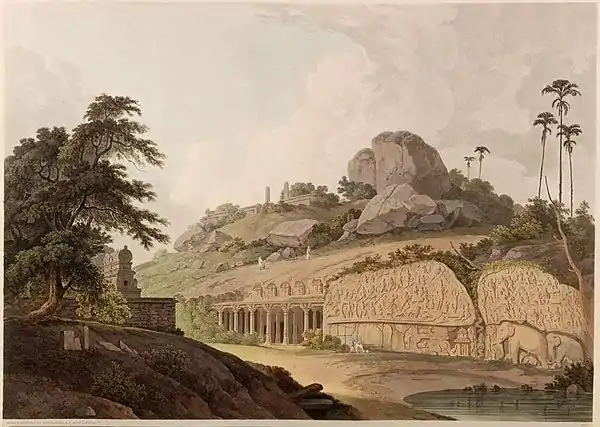No. II.
THE ENTRANCE OF AN EXCAVATED HINDOO TEMPLE, AT MAUVELEPORAM.
This rock, like the former, is of coarse granite; the excavation consists of one large apartment, of an oblong form, leaving a small temple attached to that side opposite the entrance. The roof is supported on the sides and front by a double range of columns, all curiously, and not inelegantly, formed of the natural rock. Those on the outside are composed of a lion sitting on a double plinth, forming the lower part of the shaft, which rising octagonally, and tapering, terminates in a capital consisting of three men on horseback supporting the cornice, above which are small ornamental temples in basso-relievo. To the right of this excavation the rocks are sculptured with a great variety of mythological figures, many of which are extremely well carved. On the high ground to the left are the ruins of a large structure nearly mouldered away.
Mauveleporam, or Mahabalipore, is considered by the natives, now residing in a small village of the same name, as the remains of a city of vast magnificence, and of the highest antiquity; and supposed to have been founded by the great Bali, whose name it bears.

The entrance of an excavated Hindoo Temple, at Mauveleporam.